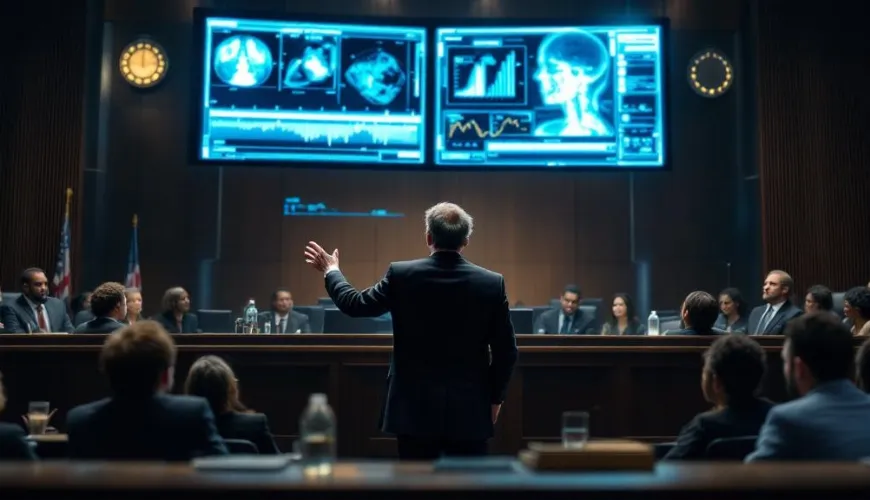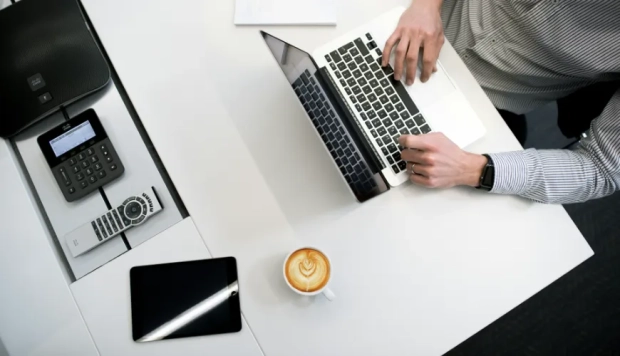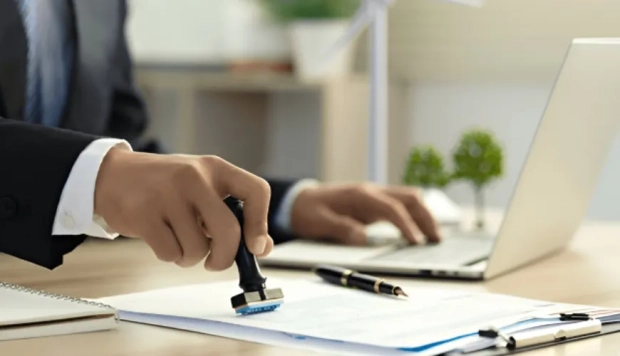Using Visuals to Strengthen Your Case at Every Stage

Today, visuals have emerged as a powerful tool in storytelling, presentations, and legal cases. They convey complex information more clearly and engage audiences on a deeper level. From diagrams and charts to videos and animations, the use of visuals improves comprehension and retention, making them indispensable in legal settings. Legal practitioners seek to present persuasive arguments in court, and the incorporation of visuals into their strategies will make their cases more compelling and memorable.
The Importance of Visuals in Legal Contexts
In case of litigation or any legal presentation, the way information is conveyed can impact the outcome of a case. Visual aids simplify complex concepts, allowing jurors, judges, and even opposing counsel to understand the key elements quickly. Visuals can evoke emotional responses, appealing to the jurors' instincts and persuading them towards a desired outcome. With the use of images, graphs, and videos, attorneys can present a stronger narrative to support their arguments.
Case studies demonstrate how visuals create clarity in demonstrating the sequence of events or the nature of injuries sustained. The integration of visual reconstruction tools like MediVisuals + High Impact services can translate complicated medical or technical data into understandable formats, making it easier for juries to assimilate and discuss the evidence presented. Graphics help transform dry evidence into relatable and impactful narratives, promoting a better connection to the facts presented.
Types of Visuals to Consider
Various types of visuals can be utilized in legal cases, each serving specific purposes and improving different aspects of presentations. The most common options include photographs, diagrams, graphs, animations, and timelines. Photographs capture reality and showcase damaged property or injuries in a way that words alone cannot.
Diagrams can illustrate relationships and show how different elements connect. Graphs and charts can present data succinctly, highlighting trends or significances in a case. Animations offer an even more dynamic tool, transforming static concepts into engaging narratives that can guide viewers through complex sequences or explain technical processes in a user-friendly manner.
Timelines built with visuals create chronological sequences that allow viewers to easily follow the progression of events. When selecting the appropriate type of visual, consider its relevance to the case and the audience, as a well-chosen visual tool can elevate the presentation to new heights.
Improving Persuasiveness with Visuals
A visually enriched case presentation must engage and persuade. Effective visuals tap into the emotions of the audience, stimulating empathy and understanding. To maximize persuasive power, visuals should align with the emotional tone of the case. Images showing the aftermath of an incident can evoke compassion and lead jurors to see the human side of statistics and data.
Storytelling techniques can be incorporated into visual design. Visuals that tell a story (through sequential images or infographics) help establish a narrative arc. The combination of strong visuals with strategic storytelling can make the facts resonate more deeply with the audience and drive home critical points.
Balancing Text and Visuals
Overloading a slide or presentation with content can overwhelm and confuse the audience, diluting the intended message. Finding the right balance will guarantee that visuals complement the text and reinforce key points without obscuring them. Every visual element should have a purpose, intended to clarify and add to the narrative rather than distract from it.
Use visuals to spotlight important details and keep the accompanying text concise and relevant. A large, high-impact image can stand prominently with a brief caption summarizing its significance. Such integration allows viewers to focus on interpreting visuals while still being immersed in the case. Regular assessments during visual selection and presentation planning can help determine the right mix of elements.
Creating a Cohesive Visual Strategy
Developing a cohesive visual strategy begins with clear objectives. Legal teams must define what they want to communicate and how they plan to structure their visuals to support that messaging. An effective strategic approach involves identifying the audience's preferences, the case's key points, and the types of visuals that resonate best.
Consistency in color schemes, fonts, and styles across all visuals contributes to a professional and polished presentation. Utilizing templates can improve consistency and save time in the design process.
Some visuals may require professional development, so knowing when and how to use professional services can reinforce the overall quality of the presentation. A visually coherent strategy provides a unified experience for viewers, creating better engagement and retention in legal settings.
Best Practices for Visual Use
To confirm that visuals contribute positively to presentations, certain best practices must be followed. All visuals should be clear and high quality: pixelated or poor-quality images can distract and undermine credibility. Visuals should be easy to interpret at a glance, avoiding clutter that could confuse the audience.
Every image or graphic used should have the proper permissions for use and representation. Using original or licensed visuals improves reputability. Testing how visuals appear in the presentation is a must, as varying display conditions can alter perceptions. By adhering to these best practices, legal professionals can optimize their visual elements for maximum effect.
Leveraging Technology for Impact
Technological advancements continually reshape how visuals can be presented, dramatically improving impact. Software tools make it easier to create engaging graphics, animations, and interactive presentations that can elevate a case further. Additionally, QR/NFC-enabled digital business cards make it easy to share exhibits, expert bios, and contact details through a single, always-up-to-date link. Presentation platforms allow for seamless integration of multimedia elements, providing a richer experience for audiences.
Virtual reality (VR) technology opens new avenues for presenting evidence. VR can virtually place jurors in a crime scene, allowing them to interact with evidence in a simulated environment. Augmented reality (AR) can layer digital information over real-world visuals, supplementing evidence in an innovative way. Embracing these technological enhancements allows legal professionals to present arguments in ways that are both engaging and informative.
Ethical Considerations in Using Visuals
Legal professionals must balance their impact with ethical responsibility. Visuals should always represent factual accuracy, avoiding exaggeration or distortion that could mislead jurors. Manipulated or selectively edited visuals risk undermining credibility and may violate evidentiary standards. Every visual must adhere to legal admissibility rules for better transparency in how evidence is created and presented.
Using imagery that elicits empathy should never cross into manipulation. Ethical use means presenting visuals that provide a better understanding rather than provoke undue bias. Establishing internal review processes or consulting with forensic visualization experts helps confirm the integrity of visual materials before they are shown in court.
Collaborating with Experts for Visual Development
The creation of effective visuals requires collaboration among multidisciplinary professionals. Attorneys can benefit greatly from partnering with graphic designers, forensic illustrators, medical animators, or data visualization specialists who understand how to convert complex information into clear, persuasive imagery. Expert collaboration provides both accuracy and aesthetic quality when dealing with accident reconstructions, medical imaging, or technical data.
These professionals can advise on the best formats and media to meet courtroom requirements. Regular communication between legal and creative teams promotes consistency, prevents misinterpretation, and guarantees that the visuals align with the legal strategy. Investing in expert collaboration elevates the presentation’s professional standard and improves comprehension and engagement among jurors and judges.
Training and Preparation for Visual Presentations
An important aspect of optimizing visual presentations involves training and preparation. Legal professionals should familiarize themselves with the latest visual tools and train in effectively deploying them. Practicing presentations with visual aids comprehension of their flow and encourages proficiency in transitioning between different elements. This preparation builds confidence so that the speaker is comfortable with the visuals and content.
Soliciting feedback from colleagues during practice runs can deliver invaluable insights. Constructive critiques can uncover topics requiring additional clarity or slides needing adjustments. The iterative process fortifies the presentation quality so that the integration of visuals genuinely improves the case narrative.
Evaluating Visual Effectiveness
Post-presentation evaluations can assess the effectiveness of visual strategies. Gathering feedback from audience members, such as jurors or colleagues, can provide insights into which visuals resonated and which may have missed the mark. Analyzing the impact on case outcomes can indicate how well the visuals reinforced the arguments made during the presentation.
Evaluation involves qualitative feedback and quantitative measures, such as audience engagement levels. Monitoring how often specific visuals captured attention or prompted discussion helps improve future visual strategies. Continual assessment promotes growth and refinement in visual practices, leading to advancements in efficiency and effectiveness.
Case Studies Demonstrating Successful Visual Strategies
Real-world examples showcase the efficacy of thoughtful visual strategies in legal cases. A notable case involved a high-profile litigation where comprehensive infographics illustrated multi-layered financial discrepancies, reinforcing the plaintiff's arguments with clarity and impact.
Another case demonstrated how a well-crafted animated video was instrumental in explaining intricate medical processes leading to an injury. Providing jurors with a clear visual representation of causation positioned the argument in a favorable light. These victories highlight the potential power visuals hold in shaping case outcomes and enforcing the importance of strategic visual integration in every legal stage.
Incorporating visuals into legal presentations enriches the communication of information, improves emotional engagement, and strengthens case arguments. By carefully selecting the right types of visuals, maintaining a clear strategy, leveraging technology, and continuously evaluating effectiveness, legal professionals can create impactful presentations that resonate with judges and jurors alike.



